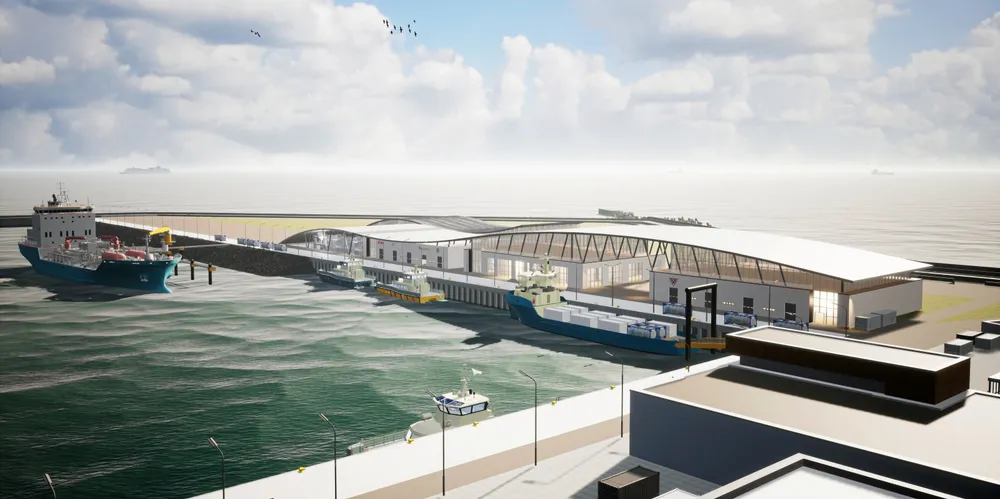Giant E.ON-led offshore wind-to-hydrogen plan kicks off carrier-oil pilot
AquaPortus - part of the gigascale 10GW AquaVentus initiative - aims to transport H2 in liquid form for use at port of Hamburg with Heligoland turned into hydrogen hub

A big-hitting industrial consortium led by utility E.ON and the Port of Hamburg has launched a new project as part of the 10GW wind-to-hydrogen Aqua Ventus development that would see the North Sea island of Heligoland turned into a hub for renewable hydrogen, with export of the gas to the mainland attached to carrier oil.
Green is the new black. Subscribe to Accelerate
Get the market insight you need into the global oil & gas industry's energy transition – from the new newsletter from Upstream and Recharge. Sign up here
The hydrogen for the project, called AquaPortus, is slated to come from sub-project called AquaPrimus, which plans production via electrolysers built-in to two 14MW Siemens Gamesa offshore wind turbines bing installed by RWE near Heligoland.
The gaseous hydrogen produced offshore would be transported to the island through a narrow pipeline, then attached to a carrier oil called LOHC (liquid organic hydrogen carrier) though chemical bonding of hydrogen molecules via a catalytic reaction developed by German start-up Hydrogenious.
LOHC technology had first been tried out by a consortium in Japan that last year that established what it called the world’s first hydrogen supply chain, realized between Brunei and Japan.
The H2 piped in from the Heligoland station would then be extracted from the carrier oil at the Port of Hamburg for the use of nearby industrial clients, or transported by rail still attached to the carrier oil to customers in Eastern Europe.
It is yet unclear how much the green hydrogen would cost that is first attached to a carrier oil via LOHC technology, and later extracted again.
AquaPrimus was last week shortlisted by the German government to receive support under the EU’s Important Projects of Common European Interest (IPCEI) programme, while AquaPortus was not.
All of the sub-projects have to prove their economic competitiveness individually.
AquaPortus also includes an upgrade of port installations on Heligoland to turn the island into a North Sea hydrogen hub. As part of the sub-project, the island is slated to be supplied with waste heat from the LOHC process in order to substitute oil-based heating.
At a later stage in the AquaVentus plan, hydrogen from offshore wind farms near Heligoland as part of the AquaDuctus sub-project is slated to be transported via a large pipeline to the German mainland – despite the AquaPrimus sub-project to transport it to Hamburg via vessels. The economic sense of building up parallel infrastructures is unclear.
Next to the Port of Hamburg and E.ON, other companies that have signed a declaration of intent to support the AquaPortus subproject are regional utilities HanseWerk and Versorgungsbetriebe Helgoland, the municipality of Heligoland, and Tewis Projektmanagment.
(Copyright)